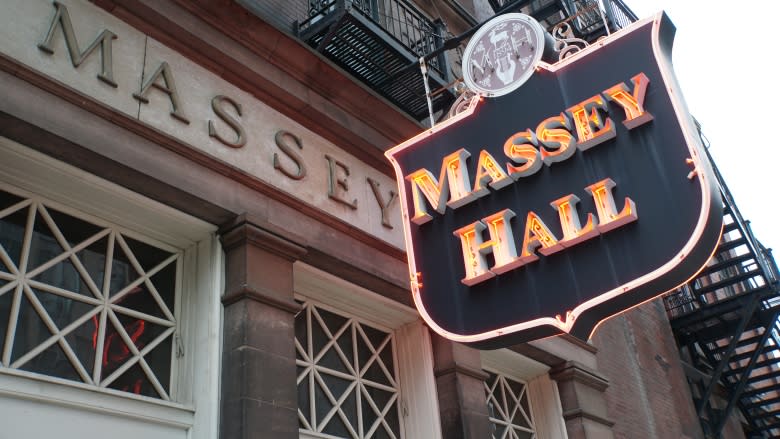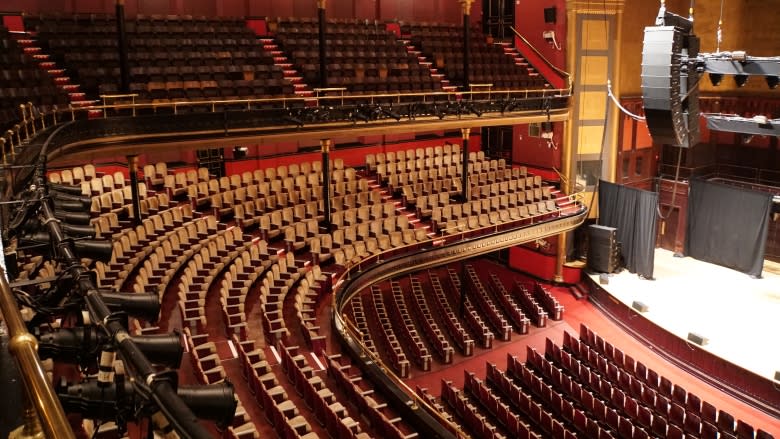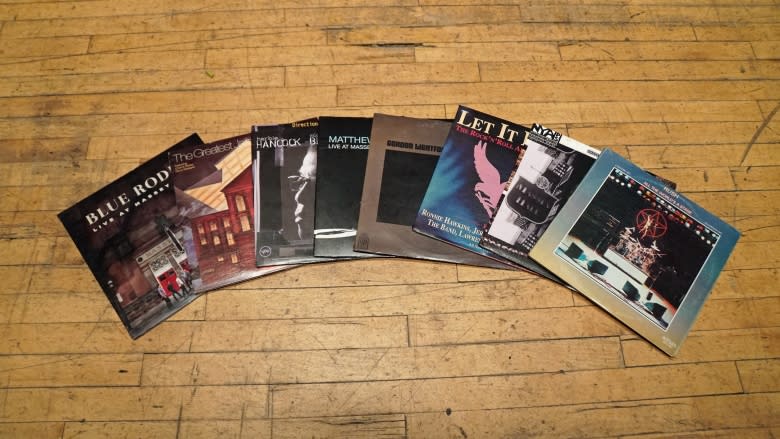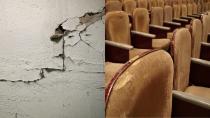Massey Hall memories: Legendary musicians on why playing there meant 'you've arrived'
Massey Hall, Toronto's iconic concert venue, holds a special place in the hearts of musicians and music lovers around the world. And it's falling apart – but that's about to change.
Built in 1894, it was the first hall in Canada constructed primarily for musical performances – and it has hosted some great ones. Musicians as diverse as Enrico Caruso, Glenn Gould, James Brown, U2 and Justin Bieber have played the stage.
From 1922 to 1982, Massey Hall was home to the Toronto Symphony Orchestra.
Throughout its history the hall has been used for more than just music, housing political meetings, comedy performances like Conan O'Brien and John Cleese, and even sports. For a few years early in the last century, wrestling events at Massey Hall outnumbered musical performances three to one.
But with the Victorian structure — which turns the 124 on Thursday — showing its age, Massey Hall is about to close for two years as it undergoes major renovations.
"Improve everything. Change nothing," says Eileen Costello, chair of Massey Hall's board, about the plan for revamping the legendary concert venue. "The 'change nothing' theme is about the acoustics and the relationship between the audience and the stage."
Here's a last look at Massey Hall before the renovations start, and at some of the venue's incredible musical history.
- WATCH: Ian Hanomansing's retrospective on Massey Hall from The National
Not your average stage
For the performers who have stood on the stage, shows at Massey Hall have always been more than your average gig.
"The room makes me smile," says Geddy Lee, lead singer and bassist for Rush. "It's mixed up with so many great memories, both as a fan and as a performer."
'Playing with the big cats'
As Tyler Stewart of the Barenaked Ladies puts it, "This is the place, man. When you've played Massey Hall, you've arrived."
Margo Timmins of the Cowboy Junkies says every gig there is special.
"When you get on that stage, you know you're playing with the big cats. This is where history has been made in your industry. So many great shows have happened here."
Here are just a few of those memorable moments:
- Once the world's most famous singer, Enrico Caruso sang twice at Massey Hall, in 1908 and 1920. For the 1920 show, tickets were the equivalent of a month's wage for the average Toronto labourer. A crowd who couldn't afford the admission gathered outside the hall. After his performance, Caruso went out onto the fire escape and performed an aria for those gathered below.
- Oscar Peterson and Glenn Gould made their Massey Hall debuts weeks apart, in 1946. Peterson was 21 and Gould was 13.
- In 1988, The Tragically Hip drew international attention when playing two songs at the Toronto Music Awards. British journalist Chris Roberts of Melody Maker said the band was the discovery of the night. Four years later they played two sold-out shows at Massey Hall.
- In 2014, Prince was set to play a surprise show at Massey Hall. However, a tweet by one of his band members let the cat out of the bag. Hundreds of fans waited in the rain for hours, only to find there would be no show.
'This is from Rush!'
The hall has also created some behind-the-scenes memories for those who've been on stage there.
When the Barenaked Ladies first played Massey Hall in 1993, they did a four-night run, breaking the record for consecutive shows by a rock band that had previously been held by Rush. The band was ecstatic when they found a gift in the dressing room from their rock heroes — a celebratory bottle of champagne.
"I held onto that bottle for two hours, telling everyone 'This is from Rush! This is from Rush!'" says Ed Robertson.
Live recordings
Numerous live records have been recorded at Massey Hall, some of them with a revered place in music history.
In 1953, for example, the Toronto New Jazz Society brought jazz legends Charlie Parker, Dizzy Gillespie, Max Roach, Bud Powell and Charles Mingus to Toronto.
The promoters were convinced that word of mouth would be enough, but it wasn't. The gig was poorly attended. It didn't help that the date coincided with a boxing prize-fight between Rocky Marciano and Jersey Joe Walcott. The Jazz Society lost money on the show, and wasn't able to pay the performers.
However, a recording of that night has become legendary in jazz circles. It has been released under the titles Jazz at Massey Hall and The Greatest Jazz Concert Ever. It was the last recorded meeting between Gillespie and Parker, and the only time these five performers played together.
Neil Young's 1971 Massey Hall recording is another standout in the history of the building.
Young played solo, treating the audience to songs that would later be released on the album Harvest. The recording circulated as a bootleg for many years and was officially released on CD in 2008, becoming an instant classic.
All the world's a stage
In 1976, Rush was a young band just starting to break through into the United States, and they returned to their hometown to record All The World's a Stage.
"It was Massey Hall, you know. It was the hall that we always dreamed of playing," says Geddy Lee, standing on the empty stage and reminiscing.
'So legendary'
The rush of playing the legendary stage is not lost on younger generations. Canadian trio The Good Lovelies recently played their first Massey Hall gig.
When she first walked onstage for the soundcheck, singer and guitarist Caroline Brooks was surprised at its size.
"We've definitely played bigger venues than this, but it's so legendary that it's like it feels so much bigger than it is."
Showing its age
At 124 years old, Massey Hall is in desperate need of an upgrade.
It will shut down at the beginning of July to undergo what those overseeing it call a "bold" revitalization.
New look
There will be an addition at the back of the hall that will be accessible through external glass corridors called passerelles.
There will also be two more performance spaces and bathrooms on every level.
The revitalization plans include the restoration of stained glass surrounding the original performance area. The windows were covered up over a century ago to mute street noises.
"What we're doing now is working with the acoustician to determine how we can maintain that special sound, while still showing the stained glass windows and restoring them," says Massey Hall Board Chair Eileen Costello.
The entire project is expected to cost more than $140 million. The Federal and Provincial governments are contributing two-thirds of the cost, with private fundraising covering the rest.
Closing act
Gordon Lightfoot has played Massey Hall more than any other individual performer. He will be the final act to play Massey Hall in its current state.
Despite having been on stage there more than 160 times, he still feels every gig there is extraordinary.
"Every moment at Massey Hall is a special moment," he says.
Watch Ian Hanomansing's retrospective on Massey Hall from The National:












